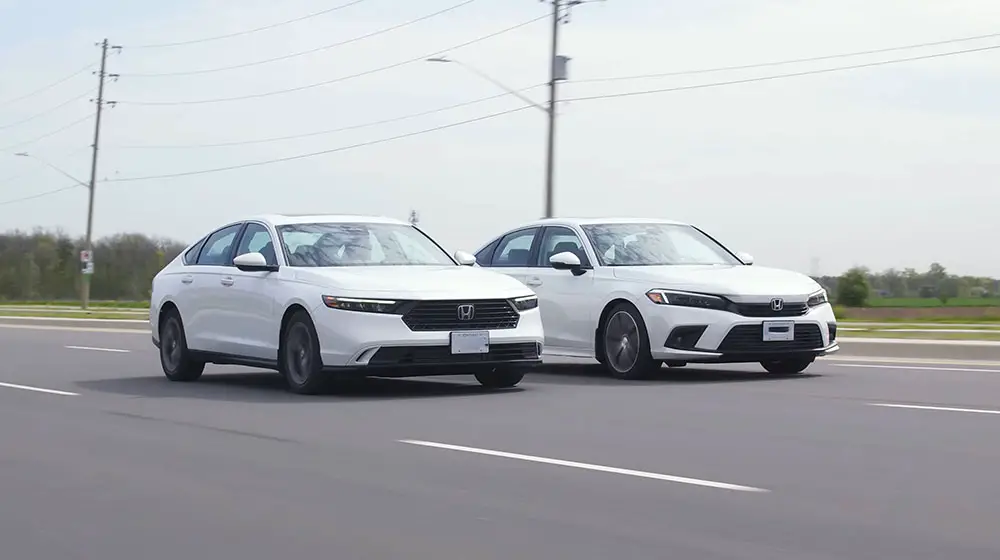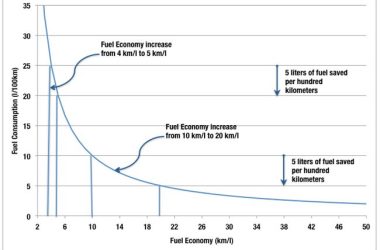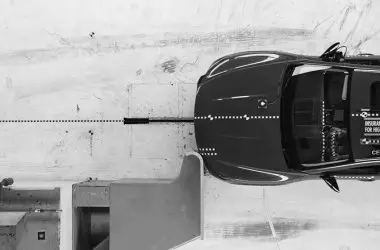Buying a car is an exciting experience, but it can also be overwhelming with all the options available. Hatchbacks are a popular choice for many car shoppers due to their versatility, fuel efficiency, and typically lower prices compared to sedans and SUVs.
When looking at hatchbacks specifically, one of the biggest decisions you’ll face is whether to go for a brand new model or a used one.
There are compelling arguments on both sides, so let’s dive in and explore the key factors to consider when deciding between new and used hatchbacks.
Benefits of New Hatchbacks
Here are some of the main advantages that new hatchbacks offer:
- Latest designs and features – Buying the current model year means you’ll get the latest exterior styling, interior amenities, entertainment systems, and safety technologies offered by the automaker. This includes things like advanced driver assist systems (ADAS), connectivity services, and more.
- Full warranty and maintenance coverage – New vehicles come with the manufacturer’s full original factory warranty (typically 3 years/36,000 miles bumper-to-bumper and 5 years/60,000 miles powertrain coverage) as well as complimentary scheduled maintenance for the first few years. This protects against unexpected repair bills.
- Greater customization – You can likely find a new hatchback on dealer lots in your exact preferred color and with your desired options/trim packages, since inventory is not limited like it is for used cars. You may also be able to custom order one built to your specifications.
- No hidden histories – When buying new, you get a vehicle with zero miles and a blank slate history. This means no concerns about how it was driven or maintained previously.
- Stronger resale value – The more recently built a car is, the better it will hold its value down the road when you go to sell it or trade it in. New cars depreciate the moment they leave the lot but tend to depreciate less overall than lightly used models.
- Potential tax deductions – Businesses that purchase a new hatchback may be able to write it off or deduct some of the costs for things like registration, interest, depreciation, insurance, maintenance, etc. Check with your tax professional.
Drawbacks of New Hatchbacks
- Expensive Upfront Cost – The main drawback of new hatchbacks is the high sticker price and large total outlay once taxes/fees are added. Even with discounts, it’s a major investment.
- Steep First Year Depreciation – A new hatchback can lose 30% or more of its value in the first 12 months. That’s thousands you’ll immediately lose on resale or trade-in.
- Higher Insurance Rates – Insuring a new hatchback is more expensive due to the higher value. You must carry full collision/comprehensive coverage. Shop for the best rates.
- Interest Charges on Financing – Even at low APR, financing a new hatchback accrues interest charges over the loan term, increasing total paid. Buyers with cash avoid this.
- Potential to Overpay for Features – It’s easy to get talked into expensive options you may not really need. Resist impulse buys that won’t get used but drive up the price.
- Risk of First Model Year Issues – Brand new model redesigns often have teething issues and defects until they get the bugs worked out. Let others be the guinea pig.
- Paying for Unknown Reliability – There’s always a degree of uncertainty with new models until they have years of owner data. Some end up very reliable while others fall short.
- Dealer Markups in Short Supply – When new hatchbacks are hard to find, some dealers tack on markups and hidden fees well above MSRP. Wait for supply to improve.
Benefits of Used Hatchbacks
On the other hand, here are some key perks that come with buying used:
- Lower upfront costs – The most obvious benefit is a lower purchase price, since used vehicles have already taken the big initial depreciation hit. The savings could be anywhere from a few thousand dollars to $10,000 or more versus new MSRP.
- Certified pre-owned options – Many lightly used hatchbacks available are certified pre-owned (CPO) models, which means they’ve passed rigorous inspections and come with extended warranty coverage for added peace of mind.
- Established track record – When you buy used, real-world reliability and ownership data is available from resources like J.D. Power dependability surveys. This can help you avoid first model year bugs and issues.
- Available financing deals – Used car interest rates are generally higher than new vehicles, but OEMs and dealers often offer attractive financing offers on CPO models to sweeten the deal.
- Lower insurance costs – Insuring a used hatchback will be cheaper compared to the latest model year. Insurance rates are based partly on the vehicle’s value, so a lower price used car costs less to insure.
- Registration/sales tax savings – Sales tax and registration fees are based on the purchase price, so you’ll pay less for a used hatchback. Depending on the state, savings could be $1,000+.
Drawbacks of Used Hatchbacks
- Unknown Service History – Without service records, you don’t know for sure how well the previous owner maintained the hatchback unless you pay for a history report.
- Outdated Safety Features – Used hatchbacks are unlikely to have the latest advanced safety tech like automatic emergency braking that new models offer.
- Fewer Factory Warranty Left – Any remaining manufacturer warranty is limited on a used hatchback. CPO warranty picks up some slack but doesn’t match new car coverage.
- No Chance to Custom Order – With used, you can’t build and order exactly the color, trim, packages and options you want. You get to pick from dealer inventory.
- Condition Variability – The mechanical condition, wear and tear, reconditioning quality, etc. can vary car to car. Examine each model closely before buying.
- Interest Rates May Be Higher – Used car loan rates from banks and credit unions tend to be 1-2% higher than new vehicle financing rates.
- Purchase Experience Takes Longer – It typically takes more time to locate the right used hatchback, haggle pricing, secure financing, etc. Streamline where you can.
- Difficult to Know if “Lemon” – Researching vehicle history reports helps spot previous lemon titles. But it isn’t foolproof in identifying proven problem cars.
Factors When Comparing New and Used
Now that you understand the main pros and cons of buying new versus used hatchbacks, here are some key factors to keep in mind as part of the decision process:
Vehicle History and Condition
A thorough inspection and vehicle history report (VHR) is a must when buying any used car. Check for signs of accident damage, flood damage, odometer tampering, etc. Ensure regular maintenance has been done. Consider the wear and tear – things like brake and tire condition. Higher mileage will also increase the odds of issues cropping up.
Repair and Maintenance Costs
There’s no escaping the fact you’ll need to invest in maintenance and repairs down the road, even with a new car. But a new hatchback under warranty means you’re protected if issues arise. Out of warranty repairs on a used model can involve big bills. Review common problem areas for the specific models you’re considering.
Insurance Costs
Crunching the numbers on insurance gives you a clearer picture of the overall cost difference when adding a new car to your policy versus a used one. Geico, Progressive, and other major insurers let you get quotes online for specific vehicles to compare.
Resale Value and Depreciation
Hatchbacks unfortunately depreciate faster than other vehicles. But buying used means taking less of an initial depreciation hit. Evaluate resale value down the road – newer models typically hold value better. Aim to keep the car at least 5 years to maximize your ownership period.
Available Trims and Options
If you have your heart set on certain features or options only offered on higher, more expensive trims, buying new may be the way to go. The used hatchback pool will be limited to mostly base or mid-level trims. Build your perfect car new or compromise on used.
Financing Offers and Deals
Attractive new car financing rates and deals from the automaker/dealer can tilt the equation in favor of buying new. You may be able to lease very affordably or get 0% APR financing. Shop around to see if used financing offers are competitive.
Warranties
The manufacturer’s new car warranty provides great protection – typically 3 years/36,000 miles bumper-to-bumper and 5 years/60,000 miles powertrain. CPO used models also come with nice warranty coverage. Otherwise, you may need to purchase an extended warranty for an older used hatchback.
Questions to Ask Yourself
As you weigh your options and budget when deciding between new and used hatchbacks, here are some important questions to ask yourself:
- How long do I plan to keep the vehicle? Will I get my money’s worth buying new?
- Can I afford the monthly payment difference for a new car? How much are insurance and taxes?
- How handy am I with repairs? Do I want to DIY or pay for work done?
- What feature, tech and safety upgrades matter most to me?
- Do I need a warranty as a safeguard against repair bills?
- Will this be my primary family vehicle or a secondary commuter car?
- How many more miles will I realistically drive annually?
- Is resale value a few years down the road important?
Being honest about your intended ownership period, budget constraints, typical annual mileage, and other factors will help guide your new versus used hatchback decision. Keep an open mind until you’ve evaluated all the variables for your situation.
How To Shop Smart for a Used Hatchback
Follow these tips to find the best used hatchback and avoid pitfalls:
- Define your must-have features so you pick a model with the capabilities you require.
- Set a firm target price range for your budget and don’t exceed it based on monthly payments alone.
- Research pricing guides like Kelley Blue Book to understand fair market value based on mileage and condition.
- Read consumer sites and forums to spot common problems with models that interest you.
- Obtain a vehicle history report using the VIN to check for accidents, flood damage, odometer rollbacks, lemon history and ownership.
- Inspect service records to confirm regular maintenance and oil changes were performed.
- Schedule a used hatchback inspection by an independent mechanic before purchase to assess issues.
- Take any contender on a lengthy test drive of at least 20-30 minutes.
- Carefully inspect inside, outside, under the hatchback and test all accessories.
- Ask the seller detailed questions on maintenance, repairs, damage and usage.
- Negotiate the best possible out-the-door price below market averages by citing competition.
- Confirm any remaining factory or CPO warranty lengths, terms and coverage.
Never rush the used car buying process. Taking time protects you from buying someone else’s problem. The extra diligence reduces the chance of regrets after driving the hatchback home.
How To Get The Best Price On a New Hatchback
These proven tips can help you negotiate the lowest price on a new hatchback:
- Shop end of model year sales in fall when dealers push to meet quotas with bigger discounts.
- Research invoice pricing so you understand dealer markup and profit margins.
- Run the hatchback you want through car buying service sites to compare real dealer prices.
- Get pre-approved financing from your bank/credit union so you negotiate from a position of strength.
- Obtain quotes from multiple dealerships in your region and compare their prices for the same vehicle.
- Ask each dealer if they will beat the best offer you’ve received so far from competitors.
- Point out all flaws, imperfections and damage to lower asking price for an in-stock model.
- Bundle multiple discounts like manufacturer rebates with dealer promotions for maximum savings.
- Look for dealers with excess new hatchback inventory to take advantage of clearance sales.
- Offer to use the dealer’s financing if they’ll discount the vehicle price further in return.
- Close the deal at month’s end when sales managers are up against quotas and more willing to bargain.
Enter negotiations with confidence in your research and offer below MSRP. Multiple email quotes keep dealerships competing for your business. This bidding process empowers you to drive the hardest bargain.
Hatchback Ownership Costs
Hatchbacks are inexpensive to buy but also affordable to own long-term due to good fuel economy, insurance rates, and maintenance costs. Here’s a detailed look at hatchback ownership costs:
Fuel Costs
With mainly 4-cylinder engines, hatchbacks achieve excellent EPA fuel economy ratings. For example, the 2023 Hyundai Accent gets up to 41 mpg highway. The Toyota Corolla hatchback achieves up to 38 highway mpg. Real-world figures may be a bit lower but these numbers translate to low annual fuel expenditures.
Insurance Costs
Hatchbacks are among the cheapest vehicles to insure due to their small size, efficient engines, and low rates of accidents/claims. For instance, the Honda Civic hatchback only costs about $1,100 a year to insure on average. The Kia Rio hatchback averages just $980 per year for full coverage based on quoted policy rates.
Maintenance and Repairs
Basic maintenance on hatchbacks only costs around $300-400 for an oil change, tire rotation, filters, etc. based on dealership prices. These small cars don’t require expensive upkeep. Repairs are also reasonable – brakes typically run $300-500 for all four wheels and minor engine repairs average $600-1200 based on independent shop rates.
License, Registration, Taxes
Since hatchbacks have lower purchase prices than larger vehicles, your annual registration fees, sales taxes, and personal property taxes will also be lower. For example, licence and registration is only about $100-200 per year for most hatchback models.
Depreciation Costs
Hatchbacks do depreciate faster than other vehicle types, losing about 50% of value over the first 5 years. But when the purchase price is lower, that depreciation represents less lost dollars than a more expensive car. Smart negotiators look for 1-5 year old used hatchbacks to avoid the big initial plunge in value.
How To Finance a Hatchback Purchase
Arranging the right auto loan helps place buying a new or used hatchback within reach. Keep these financing tips in mind:
- Get pre-approved with your bank, credit union or online lender so you know your credit rate upfront before negotiating.
- Shop lenders for the best interest rate savings. Even small rate differences add up over the loan repayment period.
- Compare loan term options. Shorter terms have higher monthly payments but save significantly on interest charges.
- Don’t stretch yourself too thin. Make sure your budget can handle the monthly payment plus insurance, gas and maintenance.
- Read loan documents carefully to verify you understand fees, down payment needs, early payoff penalties and more before signing.
- Boost your credit score as much as possible first since higher scores unlock better rates from lenders.
- Ask the dealership if they’ll beat your pre-approved rate. Otherwise, use your pre-approval for strongest bargaining position.
- Put down at least 20% on new purchases to avoid being upside down on the loan as it depreciates.
- Look into manufacturer financing deals with subsidized rates or cash back bonuses you can’t get elsewhere.
With pre-approval and smart rate shopping, you can find affordable monthly payments that fit your budget on any hatchback.





